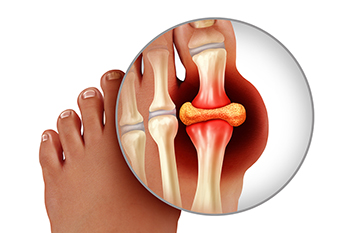The Link Between Hyperuricemia and Children
Tuesday, 04 June 2024 00:00
Gout, once considered primarily an adult ailment, is increasingly being diagnosed in children, sparking concerns about its causes and implications. Hyperuricemia, characterized by elevated levels of uric acid in the blood, serves as a primary culprit behind the development of gout in young people. Excess uric acid can crystallize and accumulate in the joints, generally in the big toe, triggering inflammatory responses that manifest as painful gout attacks. In children, hyperuricemia can arise from various factors, including genetic predisposition and dietary habits rich in purine-containing foods like red meat, seafood, and sugary beverages. Additionally, obesity and certain medical conditions, such as metabolic syndrome or kidney disease, may contribute to the onset of gout. Moreover, sedentary behavior and inadequate hydration may increase the risk. Understanding the association between hyperuricemia and gout in children underscores the importance of early detection. If you notice your child has pain in the big toe, making it difficult to walk, gout may be a factor. It is suggested that you consult a podiatrist who can effectively diagnose and manage gout and offer treatment.
Gout is a painful condition that can be treated. If you are seeking treatment, contact one of our podiatrists from Accent Podiatry Associates. Our doctors will treat your foot and ankle needs.
What Is Gout?
Gout is a form of arthritis that is characterized by sudden, severe attacks of pain, redness, and tenderness in the joints. The condition usually affects the joint at the base of the big toe. A gout attack can occur at any random time, such as the middle of the night while you are asleep.
Symptoms
- Intense Joint Pain - Usually around the large joint of your big toe, and it most severe within the first four to twelve hours
- Lingering Discomfort - Joint discomfort may last from a few days to a few weeks
- Inflammation and Redness -Affected joints may become swollen, tender, warm and red
- Limited Range of Motion - May experience a decrease in joint mobility
Risk Factors
- Genetics - If family members have gout, you’re more likely to have it
- Medications - Diuretic medications can raise uric acid levels
- Gender/Age - Gout is more common in men until the age of 60. It is believed that estrogen protects women until that point
- Diet - Eating red meat and shellfish increases your risk
- Alcohol - Having more than two alcoholic drinks per day increases your risk
- Obesity - Obese people are at a higher risk for gout
Prior to visiting your podiatrist to receive treatment for gout, there are a few things you should do beforehand. If you have gout you should write down your symptoms--including when they started and how often you experience them, important medical information you may have, and any questions you may have. Writing down these three things will help your podiatrist in assessing your specific situation so that he or she may provide the best route of treatment for you.
If you have any questions, please feel free to contact our offices located in Arlington and Mansfield, TX . We offer the newest diagnostic and treatment technologies for all your foot care needs.




